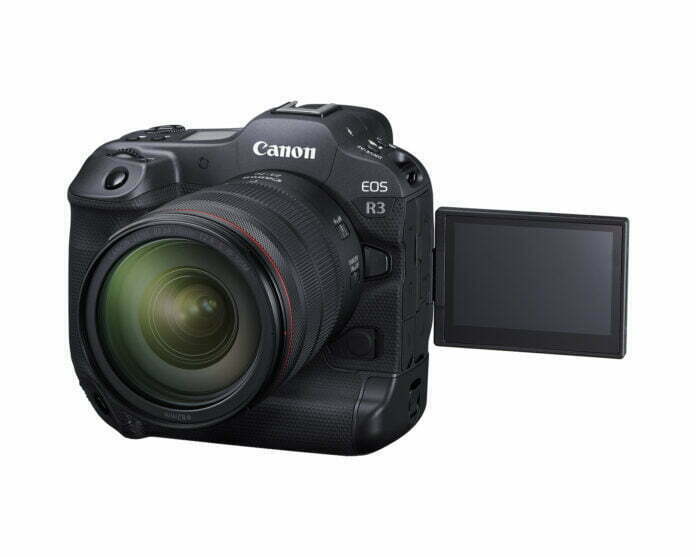Canon has finally announced the professional-grade EOS R3 mirrorless camera, with a robust new design, new sensor, and updated AF, along with two new RF lenses.
The EOS R3 is the top-tier mirrorless body in Canon’s lineup, sitting in-between the high-resolution EOS R5 and the flagship EOS-1D X Mark III DSLR. At the heart of the R3 is a brand-new 24.1MP back-illuminated stacked CMOS sensor and an updated DIGIC X image processor. The stacked sensor promotes faster readout speeds and reduces rolling shutter distortion to better cater to working with fast-moving subjects, and the BSI design is more efficient when gathering light, leading to cleaner image quality with reduced noise at higher sensitivities.
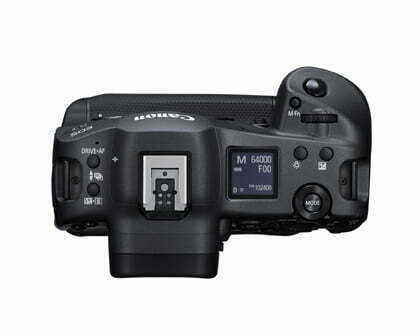
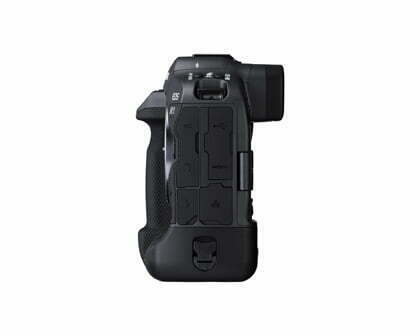
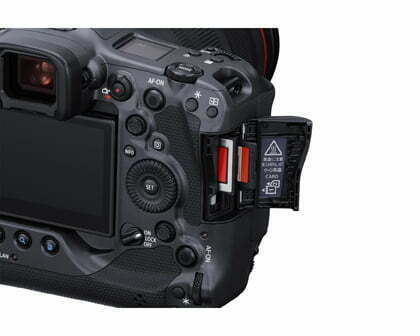
This sensor is optimized for use with an electronic shutter function and offers top shooting speeds of 30 fps with a 150-frame buffer, a top shutter speed of 1/64,000 sec, and flash sync at 1/180 sec is even possible. If working with a mechanical shutter, continuous shooting at 12 fps is available with a buffer of over 1,000 frames and flash sync is possible up to 1/250 sec. Complementing the sensor’s updated design is a revised DIGIC X image processor, which helps to orchestrate many of the performance-oriented processes of the sensor, ranging from the fast continuous shooting to the AF, image stabilization, and video recording capabilities. The sensor’s capabilities also go on to boost the sensitivity range to ISO 100-102400 for working in a wide variety of lighting conditions. Also helping to work in low-light situations, the R3 sports a 5-axis in-body image-stabilization system that compensates for up to 8 stops of camera shake.
In terms of video, the Canon R3 holds its own in the mirrorless realm with 6K 60p raw 12-bit recording and uncropped 4K 120p recording. The 6K and 5.6K recording areas can also be used for oversampled DCI and UHD 4K shooting with improved sharpness, reduced moiré, and lower noise. All 4K recording modes can be used with 60p, 30p, and 24p frame rates, and there is a choice of HDR PQ and Canon Log 3 settings depending on post-production workflow needs. Unlimited recording times are possible, too, and the R3 features both mic and headphone ports, as well as a micro-HDMI Type-D port for clean output to an external recorder.
In addition to continuous shooting and readout speed improvements, the new sensor lends itself to an improved Dual Pixel CMOS AF II system, which now features 1053 selectable phase-detection points along with automatic AF zones and enhanced subject detection and tracking. The AF system can now intelligently recognize eyes, faces, heads (including helmets), animals, and vehicles, and tracking will automatically lock onto these subjects and maintain sharp focus throughout burst captures.
Something new to EOS digital cameras in general, Canon is reintroducing Eye Control AF with the R3. This feature essentially allows you to use your eye to control where the initial focus point is, and then the camera will take control using subject tracking to keep the subject in focus.
Physically, the R3 brings is a new body design to Canon’s mirrorless lineup and is the first to sport an integrated vertical grip, which means it has duplicate physical controls for easier shooting in the vertical orientation, greater handling comfort all around, and it takes the same large-capacity LP-E19 battery as the EOS-1D X Mark III. Some other design similarities to the 1D X Mark III: The R3 has the same dust and drip resistance, with fully sealed buttons, dials, and terminals; it features wired LAN connectivity via an Ethernet port along with standard Wi-Fi and Bluetooth wireless connectivity; and there is an integrated GPS module for seamless location tagging.
The revised body also houses the impressive 5.76m-dot OLED electronic viewfinder and vari-angle touchscreen LCD. The EVF is the same high-res model found in the R5 and is a bright, clear means for eye-level viewing. This viewfinder is benefitted by the fast readout speeds of the stacked sensor, too, and offers blackout-free viewing when shooting with an electronic shutter and supports a 120-fps refresh rate for realistic motion portrayal. Conversely, the 3.2″ 4.15m-dot vari-angle LCD is perfect for working from high, low, and front-facing angles and sports a touchscreen interface for intuitive settings control.
Among other physical details of the R3, the camera features dual memory card slots—one CFexpress Type B slot and one UHS-II SD slot—for file saving flexibility. One final physical distinction on the camera body is the new Multi-Function Shoe, which is an updated hot shoe with a pin set at the front for greater accessory functionality. Taking advantage of this design, Canon is also releasing four new shoe-mounted accessories: The ST-E10 Speedlite Transmitter is a compact, lightweight wireless flash transmitter; the DM-E1D Stereo Microphone is an external mic that uses the Multi-Function interface for power and for digitally connecting to the camera; the AD-E1 Multi-Function Shoe Adapter helps transition from existing hot shoe accessories to the new Multi-Function shoe design; and the AD-P1 Smartphone Link Adapter is compatible with Android smartphones and uses the mobile device’s data connection and a Mobile File transfer app for seamless and wireless photo, video, and voice memo transferring to FTP/FTPS/SFTP servers directly from the camera.
In addition to the EOS R3 announcement, Canon is launching a pair of RF lenses that are notable for their sleek, lightweight designs and accessibility. Beginning with the wide lens first, the RF 16mm f/2.8 STM is a special wide-angle prime simply because of its mixture of an ultra-wide focal length, reasonably fast design, and compact form factor. It’s important to point out that this lens is not a fisheye, and its rectilinear design will come in handy when photographing architecture, interiors, or broad landscape views. The f/2.8 design makes it a solid choice for astrophotography applications, too, and it also features a 5.1″ minimum focusing distance that is perfect for unique close-up shots with great depth of field.
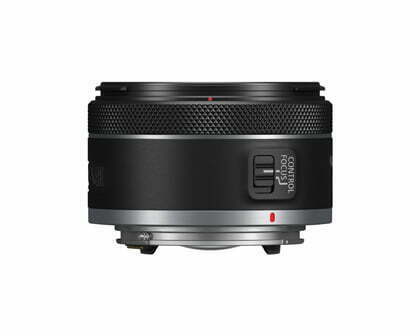
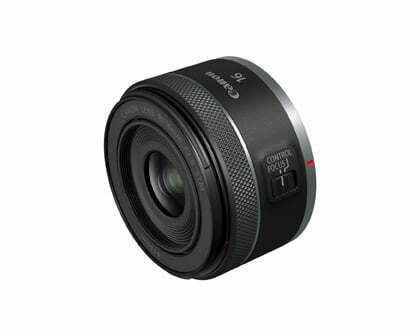
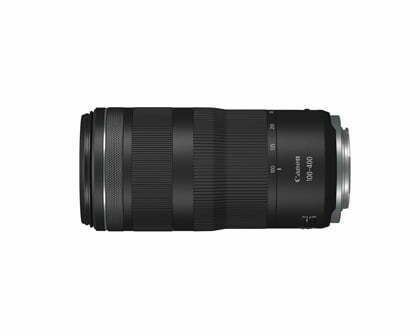
The second lens being announced is the RF 100-400mm f/5.6-8 IS USM, a telephoto zoom featuring a modest maximum aperture range that helps to keep the overall size and weight relatively low, making it an ideal partner for day-long shoots or hikes in the wilderness. Similar in stature to the popular EF 70-300mm f/4.5-5.6 IS II USM for SLRs, this 100-400mm is a fresh take on a versatile everyday zoom. It has longer reach and an updated Nano USM focusing motor for more responsive focusing performance. Also, its Image Stabilizer works with Coordinated IS with EOS R-series bodies for up to 6 stops of shake correction for low-light handheld shooting.
Canon RF 100-400mm f/5.6-8 IS USM Lens
Key Features
- RF-Mount Lens/Full-Frame Format
- Aperture Range: f/5.6 to f/45
- One UD Element, One Aspherical Element
- Super Spectra Coating
- Nano USM AF Motor
- Maximum Magnification: 0.41x at 400mm
- Optical Image Stabilizer
- Customizable Control Ring
- Rounded 9-Blade Diaphragm
Optically, this zoom features an Ultra-Low Dispersion element that reduces color fringing and chromatic aberrations, and an aspherical element helps to boost sharpness and minimize distortion. Unique among tele-zooms, this lens also has a 2.9′ minimum focusing distance at 200mm and a 0.4x maximum magnification at 400mm, making it a surprisingly solid choice for close-up shooting. For even more versatility and greater reach, this lens is also compatible with the Extender RF 1.4x and RF 2x teleconverters.
Discover more from SNAP TASTE
Subscribe to get the latest posts sent to your email.



